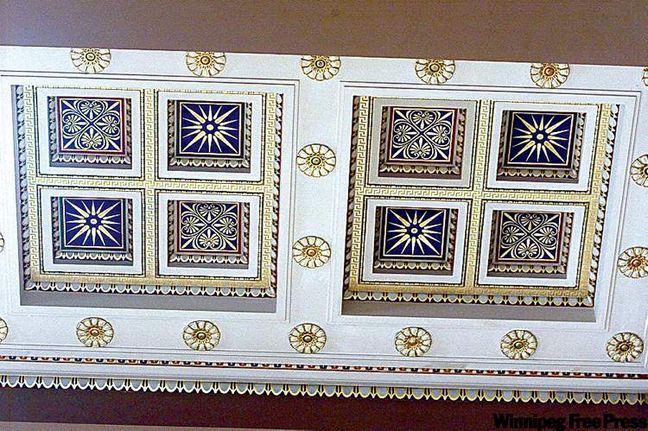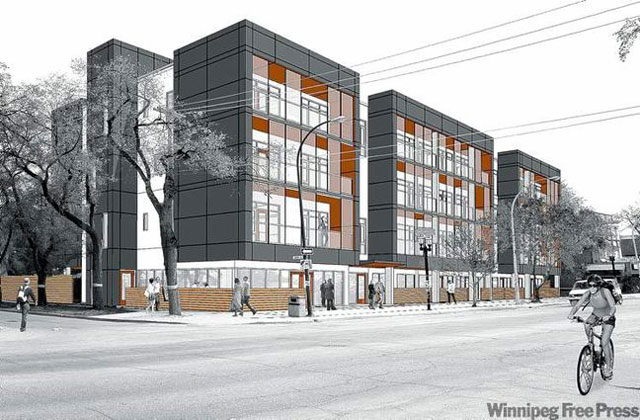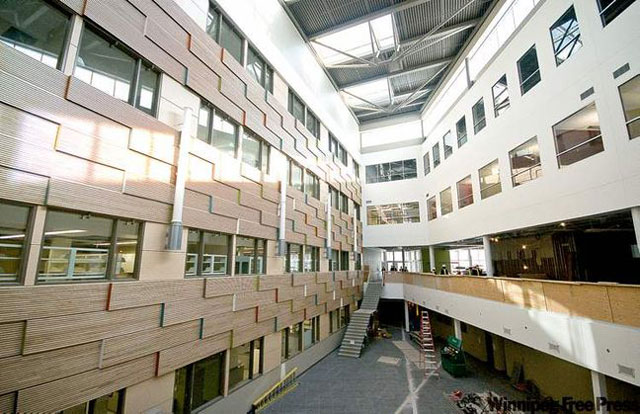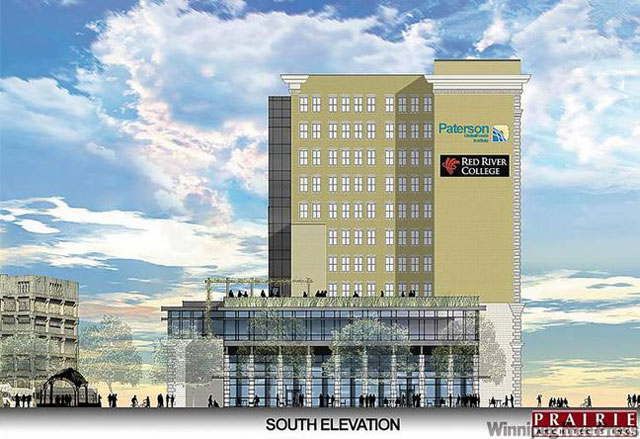Finding Winnipeg's hidden jewels - Downtown filled with historic architecture
- Details

As the calendar moves into the dog days of August, thousands of Manitobans will head out on their summer vacations to explore the architecture and metropolitan character of different cities across the continent. From weekends in Minneapolis or Chicago, to road trips through Ontario and Quebec, many will travel near and far in search of an inspiring urban experience.
Few of us, however, will explore our own city with the same curiosity we display abroad. We often spend our vacations walking the neighbourhoods of distant cities and then return to our hurried lives, rarely slowing to appreciate Winnipeg from that same pedestrian perspective.
The design of the Holy Trinity Anglican Church came as the result of Winnipeg's first international architecture competition.
Megaprojects alone not enough - Small-scale developments vital part of city's growth
- Details

It's been an exciting few weeks for Winnipeg. First, Mark Chipman ended public speculation by confirming that our NHL franchise will once again carry the Jets name. Then it seemed as though every few days brought a press conference celebrating the start of a major new construction project in our city. These announcements included a highrise hotel on Portage Avenue, another at the McPhillips Station Casino, a new University of Winnipeg field house and the long-awaited renovation of the Metropolitan Theatre.
These four projects alone represent almost $200 million in construction activity and will play an important role in the growth of the city's economy, while inspiring optimism and civic pride in our community.
New science centre a work of art - U of W makes beautiful foray outside its box
- Details

The headline in the Winnipeg Tribune proclaimed "The city is our campus" as the University of Winnipeg celebrated the completion of Centennial Hall in 1972. Its innovative modernist architecture would grace the covers of the world's most influential design magazines and would establish Winnipeg's urban university as a significant part of the city centre.
Through the years, Centennial Hall's iconic character has been diminished by redevelopment and the university's public presence in the downtown has faded. Recently, however, this trend has begun to reverse as the U of W has embarked on an aggressive expansion plan that for the first time in its history has the campus breaking away from its traditional island block. A series of stylish new buildings is redefining the university's physical image and its presence in the downtown, much like Centennial Hall did decades ago.
Downtown's status symbol - Union tower conversion vital to renaissance
- Details

Pedestrians gazed in wonder as her steel frame rose high above the city in the summer of 1903. The Manitoba Free Press wrote: "The huge steel stanchions have reached a point skyward where it almost begins to make one dizzy to view the upward progress." She was a symbol that this confident young city had arrived on the national stage, a declaration that it could compete with the great cities of the east.
Union Bank Tower at the apex of the bend in Main Street took its place in Winnipeg's skyline more than a century ago. Many of the great events in our city's history have happened in her shadow, yet most of us pass by without appreciating her significance or engaging in the stories she can tell.
Modern-day revitalization will inject energy into downtown when it becomes home to Red River College students.
Development needs managing - Strip-mall additions to Corydon Avenue detract from popular area's overall charms
- Details

As another long winter fades into memory, the temperatures have begun to rise and leaves are starting to appear on the trees. A new season is finally upon us. For many, it's simply known as spring. For others, the colourful umbrellas popping open in front of restaurants across the city are a welcome sign patio season has finally returned.
The cornerstone of Winnipeg's patio culture is, of course, Corydon Avenue, which has blossomed in recent years to become one of Winnipeg's few vibrant pedestrian areas. On a warm June evening, the sidewalks overflow with activity as people enjoy a trademark gelato, do some shopping or simply spend time watching the crowds. It is an urban experience that at times is comparable to that found on streets like Robson in Vancouver or Whyte Avenue in Edmonton.


